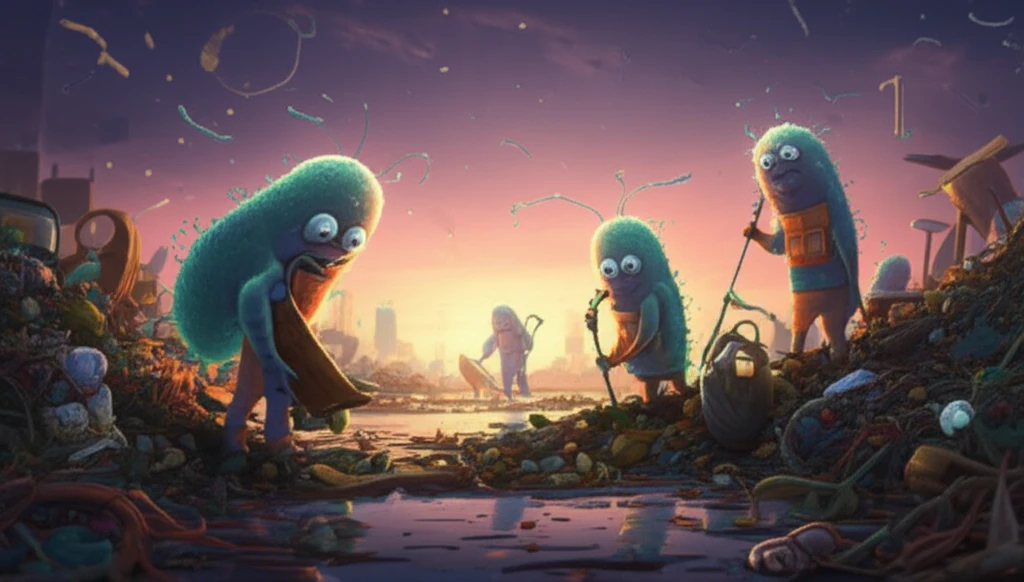
Landfill Rescue: How Bacteria Can Help Us Solve Waste Problems
"Discover how a novel, strongly resistant Bacillus salmalaya strain is revolutionizing landfill leachate treatment, reducing chemical oxygen demand and ammonia nitrogen."
The growing amount of waste we produce is a significant threat to our environment. Finding sustainable ways to deal with this waste is more critical than ever to protect our planet and our health. Bioengineering, using biological systems to solve environmental problems, is becoming a key area of focus.
Landfill leachate, a highly toxic liquid that forms when rainwater filters through waste, poses a serious challenge. It's loaded with ammonia nitrogen and has a high chemical oxygen demand (COD), making it difficult and expensive to treat. Traditional methods often fall short, highlighting the need for new approaches.
Now, a promising solution has emerged from an unexpected source: a resilient bacterium called Bacillus salmalaya strain 139SI. This article dives into the groundbreaking research demonstrating how this novel microbe can significantly reduce ammonia nitrogen and COD levels in landfill leachate, offering a sustainable and efficient way to manage this environmental hazard.
The Power of Bacillus salmalaya: A Natural Solution

Researchers investigated Bacillus salmalaya strain 139SI, a newly identified bacterium, for its ability to remove ammonia nitrogen from landfill leachate. What makes this strain special is its ability to survive in environments with high concentrations of ammonia nitrogen, a common challenge in landfill leachate treatment. The study explored how different conditions, such as temperature, inoculum dosage (the amount of bacteria used), and pH levels, affected the bacterium's performance.
- Optimal Conditions: The best results were achieved within 11 days under specific conditions: a 10% v/v inoculant (volume of bacteria relative to the volume of leachate), a pH of 6, and a temperature of 35°C.
- Ammonia Removal: Under these optimal conditions, Bacillus salmalaya removed 78% of the ammonia nitrogen.
- COD and BOD Reduction: The bacterium also significantly reduced the chemical oxygen demand (by 88%) and biological oxygen demand (by 91.4%).
- Visual Evidence: Scanning electron microscopy revealed that ammonia ions were effectively captured on the surface of the Bacillus salmalaya cells.
A Cleaner Future with Bacterial Allies
Bacillus salmalaya strain 139SI presents a promising avenue for significantly reducing the levels of harmful pollutants in landfill leachate. Its ability to thrive in harsh conditions and efficiently remove ammonia nitrogen and COD makes it a strong candidate for real-world applications.
This research underscores the potential of bioaugmentation as a sustainable and cost-effective solution for waste management. By harnessing the power of microorganisms, we can develop innovative strategies to protect our environment and build a cleaner future.
Further research and field trials will be essential to optimize the use of Bacillus salmalaya in large-scale leachate treatment. However, these initial findings offer a beacon of hope for more effective and environmentally responsible waste management practices.
